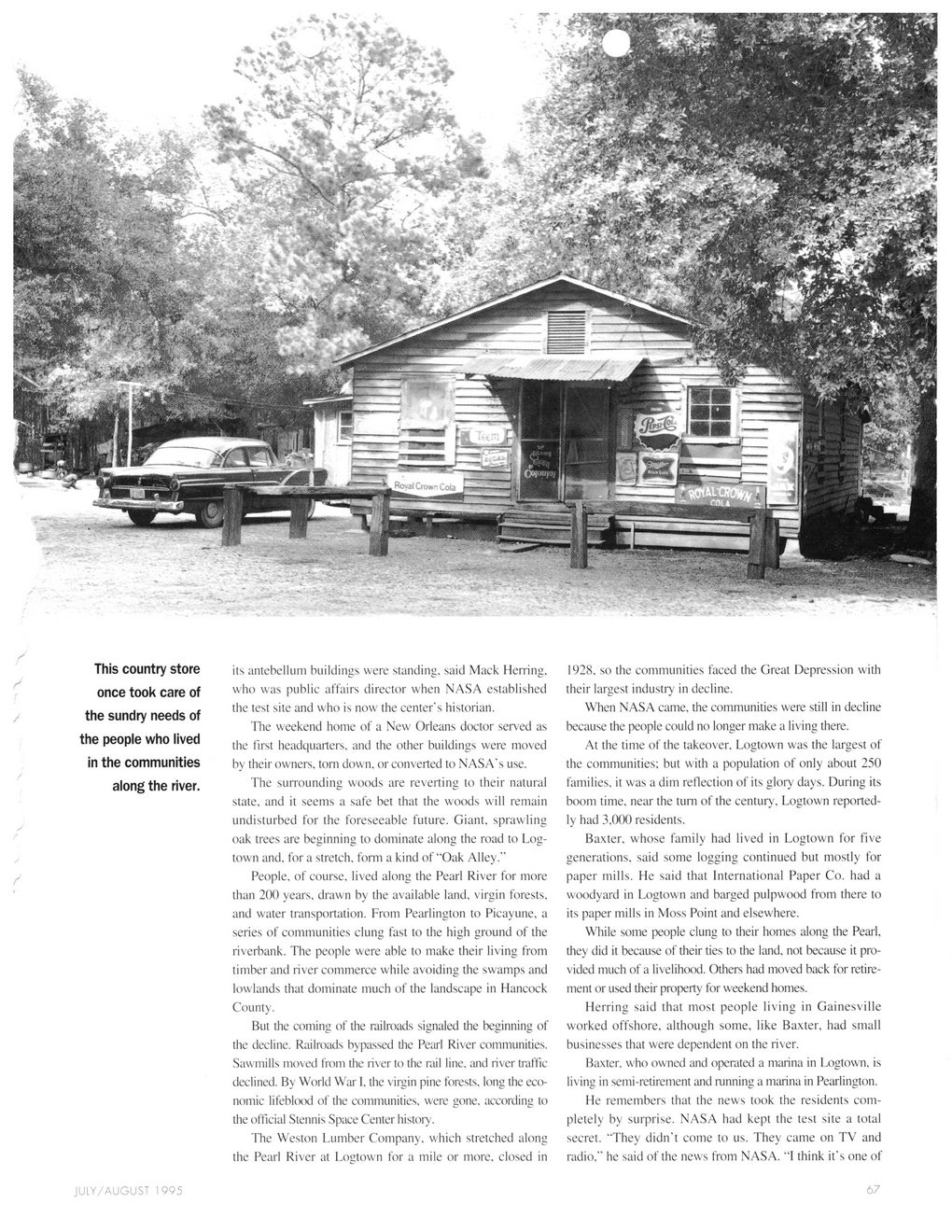This text was obtained via automated optical character recognition.
It has not been edited and may therefore contain several errors.
its antebellum buildings were standing, said Mack Herring. 1928. so the communities faced the Great Depression with who was public affairs director when NASA established their largest industry in decline. the test site and who is now the center's historian. When NASA came, the communities were still in decline The weekend home of a New Orleans doctor served as because the people could no longer make a living there, the first headquarters, and the other buildings were moved At the time of the takeover. Logtown was the largest of by their owners, tom down, or converted to NASA's use. the communities: but with a population of only about 250 The surrounding woods are reverting to their natural families, it was a dim reflection of its glory days. During its state, and it seems a safe bet that the woods will remain boom time, near the turn of the century, Logtown reported- undisturbed for the foreseeable future. Giant, sprawling ly had 3.000 residents. oak trees are beginning to dominate along the road to Log- Baxter, whose family had lived in Logtown for five town and. for a stretch, form a kind of "Oak Alley." generations, said some logging continued but mostly for People, of course, lived along the Pearl River for more paper mills. He said that International Paper Co. had a than 200 years, drawn by the available land, virgin forests. woodyard in Logtown and barged pulpwood from there to and water transportation. From Pearlington to Picayune, a its paper mills in Moss Point and elsewhere, series of communities clung fast to the high ground of the While some people clung to their homes along the Pearl, riverbank. The people were able to make their living from they did it because of their ties to the land, not because it protimber and river commerce while avoiding the swamps and vided much of a livelihood. Others had moved back for retire - lowlands that dominate much of the landscape in Hancock ment or used their property for weekend homes. County. Herring said that most people living in Gainesville But the coming of the railroads signaled the beginning of worked offshore, although some, like Baxter, had small the decline. Railroads bypassed the Pearl River communities, businesses that were dependent on the river. Sawmills moved from the river to the rail line, and river traffic Baxter, who owned and operated a marina in Logtown. is declined. By World War I. the virgin pine forests, long the eco- living in semi-retirement and running a marina in Pearlington. nomic lifeblood of the communities, were gone, according to He remembers that the news took the residents com- the official Stennis Space Center history. pletely by surprise. NASA had kept the test site a total The Weston Lumber Company, which stretched along secret. "They didn't come to us. They came on TV and the Pearl River at Logtown for a mile or more, closed in radio." he said of the news from NASA. "I think it's one of This country store once took care of the sundry needs of the people who lived in the communities along the river. JULY/AUGUST 1995 67

Gainesville Town-Killed-by-Space-Age-2